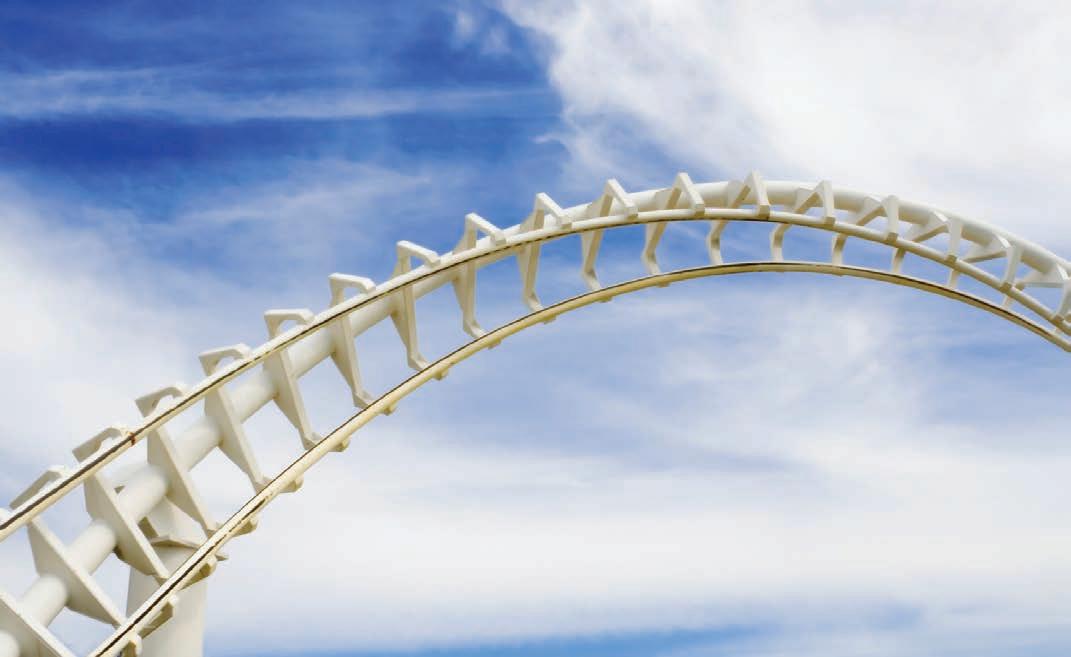
15 minute read
FEATURES
Middle East Services
On Thursday, 8 May 2008, in the Port of Baltimore, American Roll-on Roll-off Carrier, LLC (ARC) welcomed the latest addition to its fleet of US Flag vessels operating in international trade, the Independence II. The ceremony was a festive occasion with guests of honor from USTRANSCOM, MARAD, Capitol Hill, the Governor of Maryland’s office, the Port of Baltimore, and a host of maritime industry and labor dignitaries. The lady sponsor for the ceremony was Mrs. Susan Tellez, wife of Mr. Auggie Tellez, Executive Vice President of the Seafarers International Union (SIU). The Independence II adds important militarily-useful tonnage crewed by US citizen merchant mariners to the US Flag international commercial fleet and the Maritime Security Program (MSP) fleet.
ARC Chairman & CEO Raymond Ebeling welcomed guests to the Helen Delich Bentley Port of Baltimore, including the Honorable Ms. Bentley herself as well as head of the Port, Mr. Jim White, and ably summed up the sentiment of the day by offering, “we are very pleased to be able to continue to expand our US Flag international fleet.” General Norton A. Schwartz, Commander USTRANSCOM, and Mr. Michael Sacco, President SIU, were the featured speakers. General Schwartz commented, “This is a great day for ARC, and for our merchant mariners. And, ladies and gentlemen, if one of our Maritime Security Program partners and the merchant marine are having a good day, we know that it’s also a great day for America.” The General also pointed to the historical significance of the day as both the birth date of President Harry S. Truman and the anniversary of Victory in Europe Day, 1945. Of that generation, he offered, “were they here today, perhaps many of them would appreciate the real significance” and “effect on global transportation of what this ceremony signifies.”
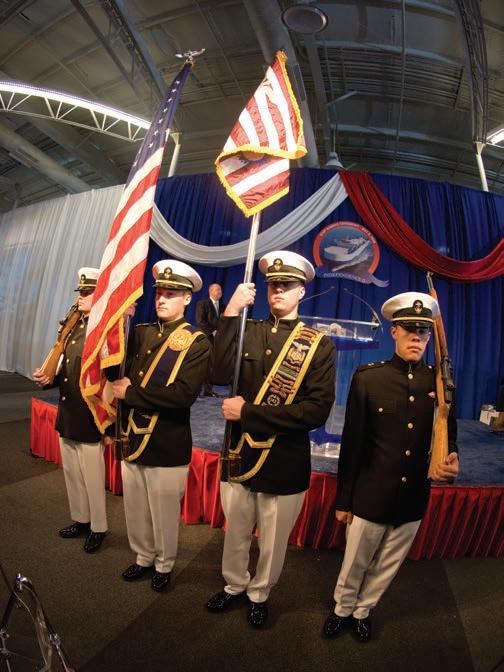
– General Norton A. Schwartz
Few modern rites have a 4000-year old tradition, but the rituals of ship naming and launching are one of the few traditions reaching that far back in history. The practice of using wine, or later champagne, as the toast to new ships can be traced back almost as far, and was first employed as a substitute for the spilling of blood. A Babylonian narrative from the third millennium BC recounts the completion of a ship, and the Egyptians, Greeks, and Romans invoked the gods to protect seamen. Ship launching participants in ancient Greece wreathed their heads with olive branches, drank wine, and poured water on the vessels as a symbol of blessing. Shrines were carried on board Greek and Roman vessels and were often placed at the quarterdeck, a practice continued to the Middle Ages and that continues to endow the quarterdeck with special ceremonial significance. Later, Viking ceremonies were marked by human sacrifice and incantations by high priests to appease the gods and protect the crew, while Ottoman ceremonies were accompanied by prayers, the sacrifice of sheep, and appropriate feasting. Until 1811, the ceremony of christening a ship in Britain was generally performed by a male of the British Royal Family or other member of the aristocracy, until, in that year, King George IV introduced the first lady sponsor. Soon thereafter, in order to ensure safety, the British Admiralty directed that the bottle be secured to the stem of the ship by lanyard, another tradition that endures to this day. In 1875, Alexandra, the Princess of Wales, introduced a religious element in the form of an Anglican choral service, and the usage continues today with the singing of Psalm 107 with its special significance to mariners: “They that go down to the sea in ships; That do business in great waters; These see the works of the Lord, and His wonders in the deep.” Due to its perceived elegance as the aristocrat of wines, champagne became popular as the christening fluid of choice during the 19th century. The champagne bottles used in today’s christenings are often enclosed in a casings or sleeves, or made of sugar, to prevent fragments of glass from injuring sponsors or spectators. Ceremonial practices for naming ships in the US have their roots in Europe. Among the earliest documented launchings were those for the Continental frigate Raleigh at Portsmouth, New Hampshire, in May 1776 and the warship Constitution, the famous “Old Ironsides,” in October 1797. The first known instance of a lady sponsor for an American ship was for the sloop-of-war Concord in 1827. Unfortunately, the contemporary account does not name this pioneer, only noting that the ship was “christened by a young lady of Portsmouth.” The first identified lady sponsor was Lavinia Fanning Watson of Philadelphia, for the Germantown at the Philadelphia Navy Yard in 1846. The US Navy’s first steel battleship, the Maine, was christened with champagne by a granddaughter of then–Secretary of the Navy Benjamin Tracy at the New York Navy Yard in 1890. The effects of national prohibition from 1920-1933 were reflected to a large extent in ship christenings, with the use of water and cider becoming prevalent.
During the event, Mr. Sacco added, “I would argue that now, more than any time since WWII, this country absolutely must maintain a viable supply of US mariners. That’s part of the significance of this ceremony—new tonnage under the American flag helps maintain that manpower pool.” Upon entering service with ARC in March 2008 in the US-North Europe service, Independence II joined ARC’s fixedday-of-the-week service along with Patriot, Courage, and Integrity. She carries US military sustainment cargo, DOD service members’ privately-owned vehicles and household goods, Department of State vehicles and household goods, other US government cargoes, and commercial vehicles such as newly manufactured autos, tractors, and bulldozers. Built in 1994, Independence II takes her name after one of ARC’s original ships, the Independence, which had the distinction of serving in all of ARC’s various trade lanes to date as a true workhorse of the ARC fleet. After 30 years in service, the original Independence was recently retired from ARC’s fleet due to her advanced age. As with all of ARC’s Ro-Ro ships, the Independence II has adjustable decks and can be configured for the ideal mix and stowage of high and heavy cargo, military rolling stock and tracked vehicles, commercial and privately-owned autos, and breakbulk cargoes.
In addition to operating in the US East Coast-North Europe trade, ARC also operates four vessels in the US East Coast/ Gulf Coast-Middle East trade—Resolve, Freedom, Honor, and Liberty. With the recent expansion from three to four ships in the trade lane, and with 760,000 square feet of cargo space and a 17-day frequency, ARC is ideally placed to meet the needs of its DOD customers and project cargo shippers and commercial customers. After several years during which the Up-Armored HMMWV was the staple cargo in support of OIF, the focus has now shifted to meeting the surge lift requirements for MineResistant Ambush-Protected (MRAP) vehicles. As part of its “DOD-first” focus, ARC continues to provide unit integrity for military units’ rolling stock, and now offers an “MRAP Express” service out of Charleston, SC, direct to Kuwait with no intermediate port calls. This ensures that our soldiers and Marines in Iraq and the wider Middle East region receive these life-saving vehicles in the timeliest and most cost-effective manner possible.
During the May 8 ceremony, the sheer size and flexibility of a Ro-Ro vessel was readily apparent to all in attendance. Towering over the Port of Baltimore, guests could see from the bridge clear to the Inner Harbor and for miles around from the 13-story tall vessel. Guests were able to tour the ship deck-by-deck, where they could catch a glimpse of the various types of cargo on board, including a range of commercial vehicles, military vehicles, and high-and-heavy cargo. ARC calls on the Port of Baltimore in both of its trade
routes, as well as other commercial ports regularly. A key component of the successful DOD-ARC relationship has been ARC’s willingness and ability to also call on all SDDC managed ports in the continental US, Europe, and the Middle East. The ARC fleet is ably manned by Seafarers crews and American Maritime Officers (AMO), the latter headed by Mr. Tom Bethel. During his address, Mr. Sacco of the Seafarers pointed to the importance of maintaining a commercially viable US Flag fleet crewed by US citizens: “We need a strong US Merchant Marine because it’s good business, it’s good common sense, and it has served America well since the very first days of our nation’s history.” Mr. Ebeling added, “To make the US Flag fleet work requires a strong partnership with our friends in organized labor.” In the absence of a US Flag fleet, Ebeling added, “DOD might have to rely on a foreign crewed ship to transport equipment and materials to a war zone, which is obviously not a good idea.”
The ceremony marked the renewal of ARC’s commitment to US Flag commercial shipping and the Maritime Security Program. Headquartered in Park Ridge, New Jersey, with major satellite offices in Washington, Frankfurt, and Dubai and calling ports throughout the US, Europe, Mediterranean, Middle East, and Indian sub-continent, ARC is committed to continuing to expand its US Flag fleet to meet the needs of its valued customers. To that end, the importance of MSP cannot presence of a US-flagged commercial fleet operating in international trade that also enables the government to pursue generous overseas economic and agricultural programs. Coupled with the US cargo preference laws, it is the bedrock of the continued viability of the US Flag international commercial fleet.
The MSP fleet provides a US national security asset at a substantially lower cost than the government procuring, owning, and maintaining an equivalent capability. In an August 2006 report entitled “The Role of the US’ Commercial Shipping Industry in Military Sealift,” by the NDTA, the cost to the US Government to replicate the vessels provided for by MSP was estimated at $13 billion, plus an additional $52 billion to replicate the attendant
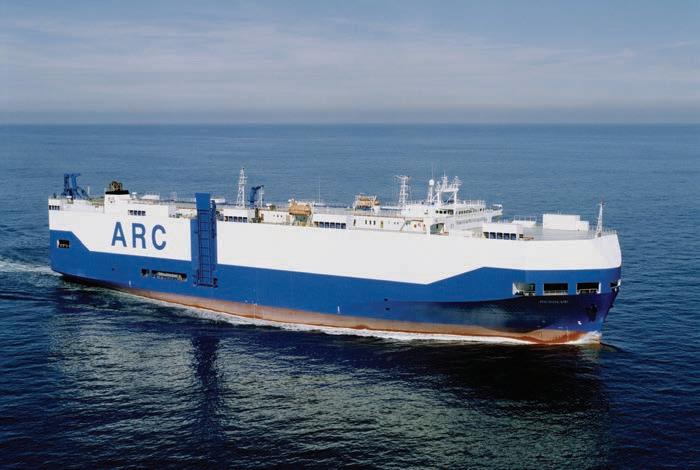
General Norton A. Schwartz
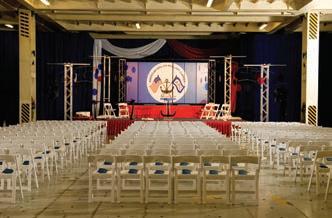

The Resolve
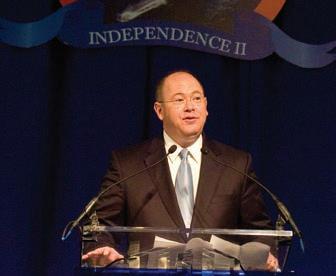
be underestimated. The MSP fleet enables the US Government to provide sealift for US armed forces utilizing the resources of the US Flag commercial fleet. Administered by MARAD in partnership with the USTRANSCOM, MSP provides for the global terminal, intermodal, and logistics networks provided by the MSP carriers. As pointed out by Mr. Ebeling, DOD “reliance on non-US Flag ships is not reliable,” and “reliance on a government-owned organic and reserve fleet for sustainment would be highly cost ineffective.” MSP is “twelve times more cost effective” than the organic fleet and provides “the right balance of reliability and cost effectiveness to provide long-term sustainment sealift . . . We should, therefore, care a great deal that there are US Flag international carriers.” With its relatively low cost, significant value for money, and favorable cost-benefit analysis, the MSP program is amongst the best in government, as evidenced by OMB’s awarding of its highest rating to the MSP program. By way of comparison, it costs an estimated $200 million to merely maintain the Ready Reserve Fleet, which consists of far fewer vessels in a laidup capacity without crews, whereas each modern MSP vessel costs less, is actively engaged in commerce, and provides for two full crews, who are also available to man government vessels in time of need. As such, it makes sense to continue to build the MSP fleet from its current 60-ship fleet in lieu of re-capitalizing the RRF.
The importance of maintaining a commercially viable and militarily-useful US Flag fleet cannot be underestimated—it provides not only a vital economic link
to the globalized economy, but also a crucial security resource that enables the federal government to utilize the carriers’ services to utilize the carriers network capability in time of crisis or national emergency. During Gulf War I, the DOD came face-to-face with the reality that it cannot and should not rely on foreign-flagged and foreign-crewed vessels, as numerous foreign flag commercial vessels refused to enter the warzone. In an after-action government-industry study, it was recognized that DOD needs the proper mix of US-flagged and US-crewed commercial ships in addition to its “organic”, or DODowned, assets, in order to fully and effectively carry out its mission. As mentioned by Ebeling, “there is, and should always be, a strong, core organic fleet which manages the surge phase of a contingency—but there is not sufficient organic capability to provide long-term sustainment sealift without the industry’s contribution.” This recognition helped bring about the creation of the Maritime Security Program, which continues to provide vital US Flag sealift and intermodal capability to this day, crewed by the nation’s “fifth service”, the loyal US citizen Merchant Marine, such as ARC’s American Maritime Officers (AMO) and SIU crews, many of whom were in attendance at the May 8 ceremony, as were a number of merchant mariner trainees from the Paul Hall Center.
The MSP program is currently authorized through 2015, and is subject to the annual Congressional Appropriations process, but it has become increasingly apparent to many in the industry that the expiration date should be eliminated outright in order to ensure DOD’s continued assured access to the necessary assets and the US Flag commercial fleet’s continued ability to reinvest in the program. The true partnership between USTRANSCOM and the US-flagged commercial fleet was emphatically reinforced by General Schwartz at the naming ceremony: “We’ll do everything we can to ensure that the MSP partners are always on the team that delivers for America.” DTJ
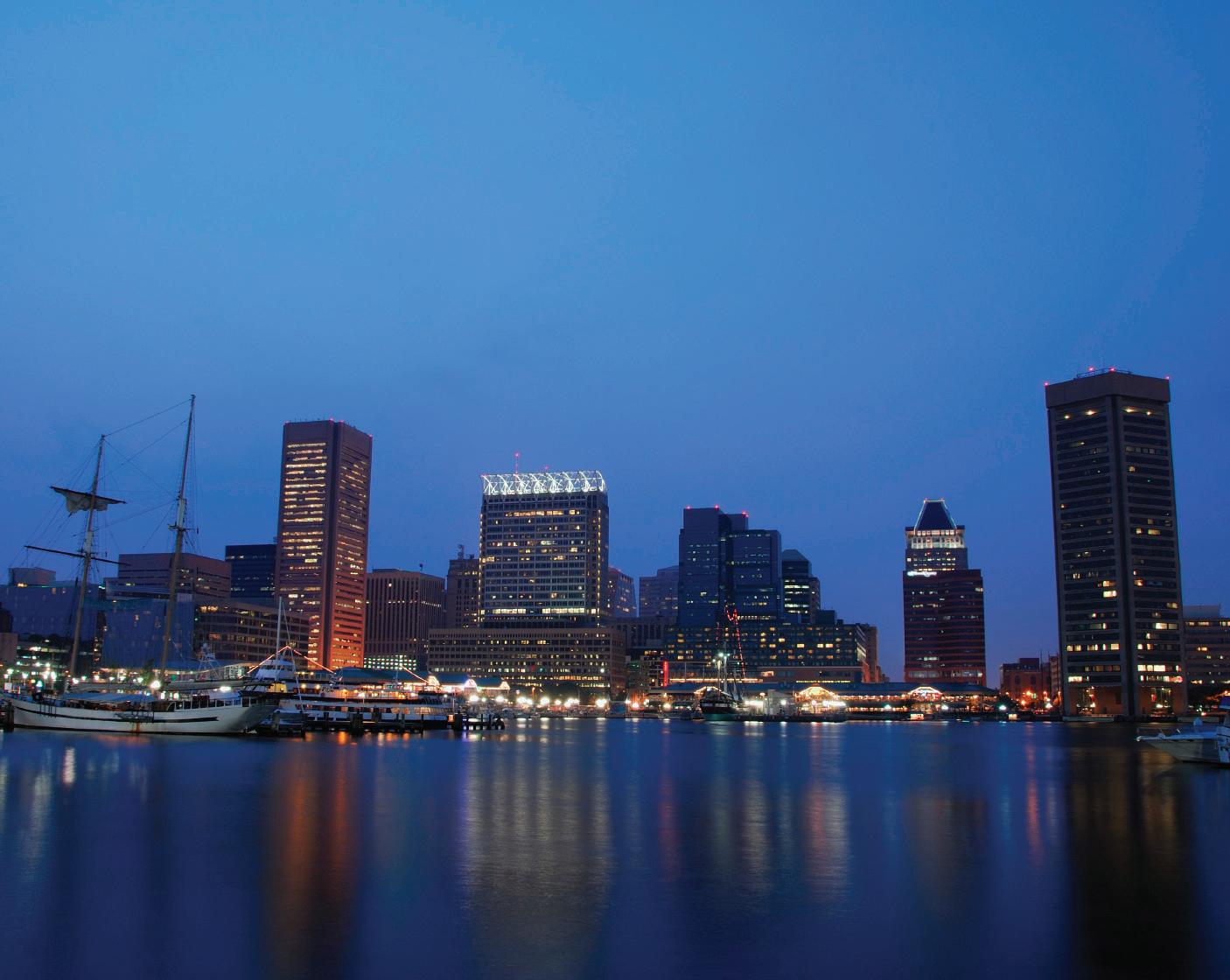
Founded in 1706 on the banks of the Patapsco River, the Helen Delich Bentley Port of Baltimore has grown to become one of the busiest ports on the US East Coast, including the leading port for roll-on/roll-off cargoes on the East Coast, with a 50% market share. The port handles more than 30 million tons annually of all cargoes from around the world. It is a significant economic engine for the mid-Atlantic region, generating $1.5 billion in revenue annually and employing 16,100 Marylanders in direct jobs and another 17,600 in indirect jobs. The port’s early history can be traced from its beginnings as a Port of Entry for the tobacco trade with England to its fame as a major shipbuilding center famous for the construction of Baltimore clippers. The arrival of the Baltimore & Ohio and other railroads in the mid-1800s made the port a major transshipment point. To this day, the Port of Baltimore, with its inland location, is the closest port to the major manufacturing centers in the Midwest. During the 19th century, the port was also a major entry point for European emigrants from Britain, Ireland, Germany, Poland, and elsewhere. Today, the port is named for Helen Delich Bentley, a former Congresswoman (1985-1995), former Chairwoman of the Federal Maritime Commission (1969-1975), and longtime port advocate. A ceremony on 1 June 2006 marking the Port of Baltimore’s 300th anniversary formally recognized Bentley’s contributions, including her 24 years as a maritime reporter and editor for the Baltimore Sun, and as a reporter, director, editor, and producer for the television series “The Port That Built a City,” and later, “The Port that Built a City—and State.” Her efforts intensified both public and government awareness of the Port of Baltimore’s substantial economic impact and of the broader importance of America’s maritime community. More than half a million automobiles move through Baltimore’s public and private terminals annually, including the public Fairfield/Masonville Terminals, the privately-owned Chesapeake and Atlantic auto terminals, and the 300-acre Dundalk Marine Terminal. The port is located a short distance from major interstate highways and is serviced by rail by Norfolk Southern and CSX. The strategic location means shorter distances between manufacturer, port, and market. Central to the port’s success as a preferred Ro-Ro port is its Quality Cargo Handling Action Team (QCHAT), a monthly meeting of stakeholders including vehicle handlers, carriers, and manufacturers that has enabled the port to post the lowest damage rate on Ro-Ro cargo throughout the country year after year. A barcode scanning system captures detailed information about every vehicle moving through the port, providing tracking, reducing damage, and enhancing security of the supply chain. Baltimore is also a major port for project cargo and containerized cargo, making it one of the most diversified ports in the US More than 60% of the cargo handled at the public terminals is containerized, and the port is one of the most productive in the North Atlantic, averaging 47 container moves per hour. The longshoreman labor force offers unlimited midnight starts and flex-time, allowing gates to operate from 0700-1800 hours, rain or shine. Experience, location, and competitive pricing make the Port of Baltimore an efficient, cost-effective, and easy to use facility. The Port That Built a City—And State
Earn a $50 gas card after just three stays.

You never know where the road will take you. That’s why this summer, you can earn $50 in free gas when you book at choicehotels.com/
gov or 866.45.BRASS. Just stay at any Comfort Inn ® , Comfort Suites ® , Quality ® , Sleep Inn ® , Clarion ® or Cambria Suites ® hotels between
June 1 ST and August 14 TH . After three separate stays, you’ll earn enough Choice Privileges ® points to redeem for a $50 gas card.*
The Choice Privileges rewards program is easy, fast and free to join. Plus, whether you are active or retired military, you and your dependants will enjoy the per diem rate for official and leisure travel.** So book today at choicehotels.com/gov or 866.45.BRASS.

